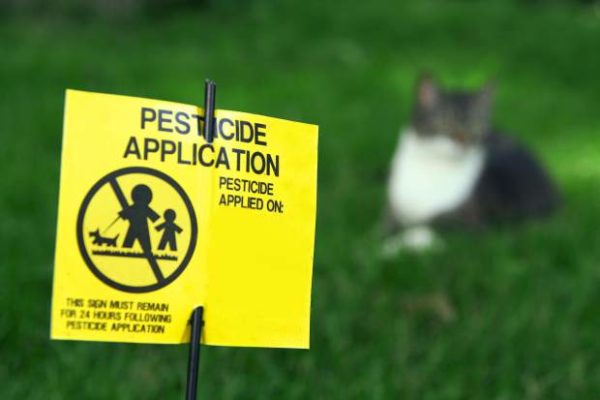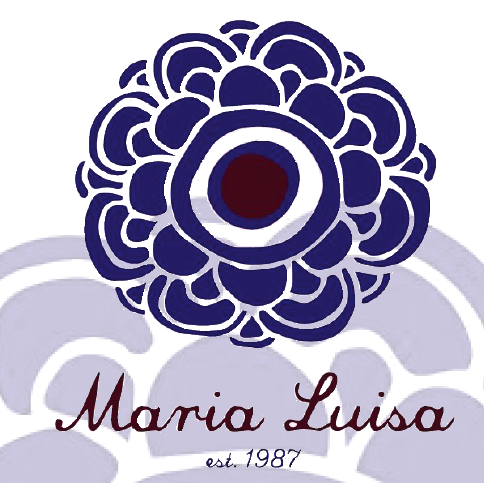 Earth Matters focuses on conservation, sustainability, recycling and healthy living. This weekly series is brought to you by Maria Luisa Boutique, Strawtown Studio and Summer Play Camp at Blue Rock School.
Earth Matters focuses on conservation, sustainability, recycling and healthy living. This weekly series is brought to you by Maria Luisa Boutique, Strawtown Studio and Summer Play Camp at Blue Rock School.If Earth Matters to you, sign up for our mailing list and get the next installment delivered right to your inbox.
by James Sklar
Last week, I wrote a guest Earth Matters column explaining why using pesticides on your lawn is environmentally dangerous. It’s also easily avoidable. Here are six easy steps to making your lawn look great without chemical enhancement.
1. Do a Soil Test
The first step in going the organic route with an existing lawn is beefing up weakened soil, which means starting with a soil test. That way you’ll know which nutrients are lacking and which organic amendments you’ll need to incorporate. For example, soil with a calcium deficiency can be top-dressed with gypsum; and soil low in magnesium might need a healthy dose of the mineral langbeinite. You will need to dig up samples from several different areas of your lawn (2 cups of soil total), and mail them off to a lab to be analyzed. Call local nurseries and university extension offices to see if they offer soil tests (both should provide soil-sample boxes).
Once you know which amendments you need, you should prepare the lawn by mowing the grass down to about two inches, pulling up weeds, removing thatch (dead grass and roots that accumulate on the surface), and aerating (a power aerator that pulls up plugs of soil can be found at most rental yards). This will enable your soil to fully absorb any amendments you add.
2. Start Composting
Whatever the test results, you’ll also want to spread a half-inch of compost on the lawn to add essential organic matter to the soil. Paul Tukey, author of The Organic Lawn Care Manual and founder of Safelawns.org, sees compost treatments as the basis for all organic lawn care. “It’s almost like a blood transfusion,” he says. “It improves soil structure—especially in clay or sand-heavy soil—and is full of beneficial organisms, including bacteria, algae, fungi, and nematodes, that keep your soil healthy.”
Look for compost that is made up of decomposed organic plant material, similar to the stuff you find on the forest floor. You can buy it at nurseries, or collect your own yard waste in a backyard bin. Many municipalities have composting programs, which provide information on how to compost, and also sometimes provide discounted composting bins. Tukey also recommends speeding up your lawn’s transition to organic by brewing your own compost tea and spraying it on your lawn once a month with a backpack sprayer or a watering can.
3. Organic Fertilizers
Organic fertilizers are another effective way to give your lawn an occasional boost during the growing season. Available at most garden centers, they contain natural ingredients such as seaweed for potassium, bone meal for phosphorous, and feather meal for nitrogen. Unlike conventional fertilizers, which deliver a heavy, instant dose of synthetic nitrogen (as well as phosphorous and potassium) for your lawn to binge on, Turkey says organics provide an easier-to-handle diet of nutrients that are released more slowly.
The thicker your grass, the more easily it can crowd out weeds. So once your soil’s been treated, overseed the lawn using an appropriate turf grass (ask your garden center for recommendations). Choose a seed mix that suits your climate, sun/shade conditions, and moisture needs, and make sure it blends well with your existing lawn. Water daily until new growth is established.
4. Look for a ‘Greener’ Grass

You can make your lawn even more sustainable by overseeding it–or completely replacing it–with native or organic grass seed. Last year, DLF Organic (Dlforganic.com) became the first U.S. company to offer USDA-certified organic lawn seed, grown without synthetic pesticides, herbicides, or fertilizers. The company offers three seed mixes: one for sun, one for shade, and one that’s mixed with nitrogen-providing clover.
Another “green” option is using native turf-grass seed. Since these seeds are familiar with their regional soil conditions and average rain fall, they require less water and are more disease-resistant than non-natives, such as Kentucky bluegrass (from Europe) and St. Augustine grass (from Africa). The best known is buffalograss, a native prairie grass that is extremely drought-resistant and, since it’s low-growing, only needs to be mowed once a month or so (for more info, visit Pawneebuttesseed.com).
Researchers at a few universities throughout the U.S. are exploring the potential of other native grasses for use as turf grass, including blue grama, a warm-season grass that’s native to the Great Plains and Southwest, and Idaho bentgrass, which is native to the western United States and shows promise as a sustainable turf in dryer climates.
5. Whacking Weeds and Pests
Making the transition to organic lawn care might mean dealing with some weeds–at least for the first year or two, as your soil and grass gain enough strength to control them naturally. One thing you can do to prevent weeds is spread corn gluten meal–an organic weed preventative–on your lawn in the spring. Just don’t do it when you’re overseeding, since it prevents germination of all seeds, including grass. While corn gluten meal works only 65 percent as well as chemical herbicides, it can still significantly reduce weed infestations.
If a few isolated weeds show up, pull them by hand or try an organic weed killer, such as Nature’s Avenger, a spray containing citrus oil, which dehydrates weeds down to the roots. Some gardeners swear by vinegar to do the same.
Weeds do have their benefits, though. They can be helpful indicators of specific problems with your soil. Got crabgrass? It can point to soil compaction, since it usually appears in highly trafficked areas, such as along driveways or walkways. Instead of zapping it with pesticides, get to the root of the problem by aerating the area where it’s growing. “You can kill the messenger all day long,” says Turkey, “but it doesn’t change the message that something is wrong with your soil.”
And not all weeds are out to destroy your lawn; some can even help it. Clover, for example, is a common broadleaf weed that works as a natural fertilizer factory, transforming nitrogen in the air into a digestible form for your soil. Some organic-lawn-care experts actually recommend adding a pound of clover seed for every 1000 square feet of lawn.
Insects and fungal diseases can also point to lawn problems. Chinch bugs are attracted to dry, drought-stressed lawns; and watering at night, especially in warm weather, can encourage fungal diseases like dollar spot or brown patch, since turf stays moist for longer.
There are organic solutions in the battle of the bugs, too. For example, beneficial nematodes can take care of grub worms, which chew through grass roots. These spray-on microscopic organisms target and devour grubs and grubs only, never harming beneficial organisms, though the timing of their application is critical.
6. Care and Maintenance Tips
When it comes to mowing a naturally grown lawn, conventional wisdom still applies. Cut it too short and it doesn’t develop the strong, healthy roots it needs to fend off weeds and disease. So find out the best height for the type of turf you’re growing. Cool-season grasses, such as Kentucky bluegrass and red fescue, prefer to be between three to four inches high. Warm-season varieties like Bermuda grass can be maintained at one to one and a half inches. Be sure to mow with a mulching attachment or a mulching reel mower and leave the clippings where they fall; they’re a natural source of nitrogen as they decompose.
And as far as conserving water, the good news is that organically-cared-for lawns require less water than chemically-treated ones, since the latter needs lots of moisture just to digest all the synthetic fertilizers and pesticides fed to them.
As with any lawn, the key is to water infrequently and deeply, encouraging turf to send down deep roots and making it less susceptible to drought and disease. The best time to water is in the early morning; this gives your lawn plenty of time to absorb the water and dry off in the sun. Most lawns require about one to two inches of water per week in summer. Use a rain gauge to measure how much water your lawn’s getting; and make sure your sprinkler water isn’t being wasted on your driveway or street.
With a little patience and a slight change in thinking, you’ll be rewarded with a handsome lawn that’s easier on the earth–and on your conscience.
James Sklar is a Nyack resident, music manager, producer, musician and environmentalist.
Email Earth Matters![]()
Read Earth Matters every Wednesday in Nyack News And Views, or sign up for the Earth Matters mailing list.
Earth Matters focuses on conservation, sustainability, recycling and healthy living. This weekly series is brought to you by Maria Luisa Boutique and Strawtown Studio.










